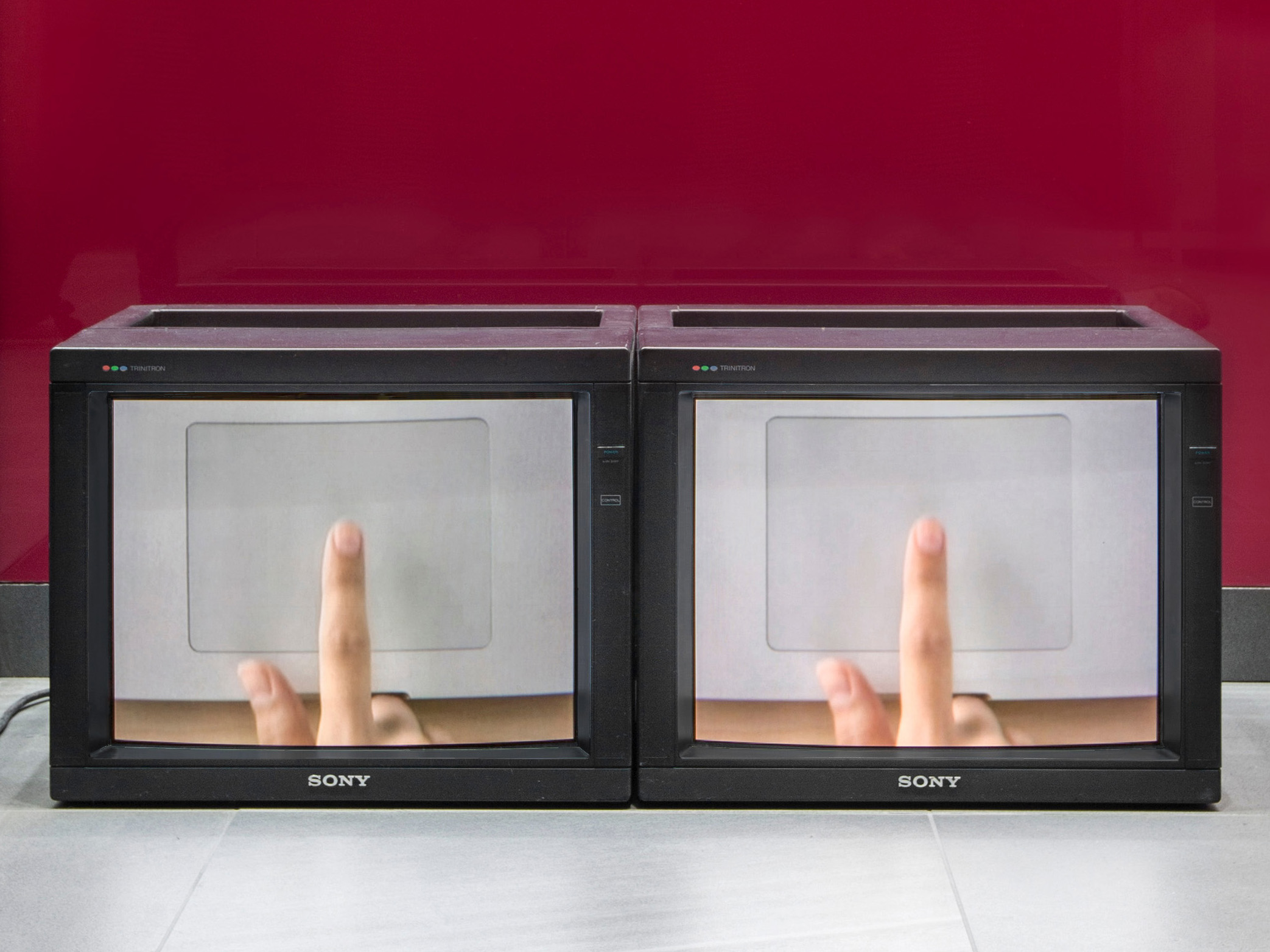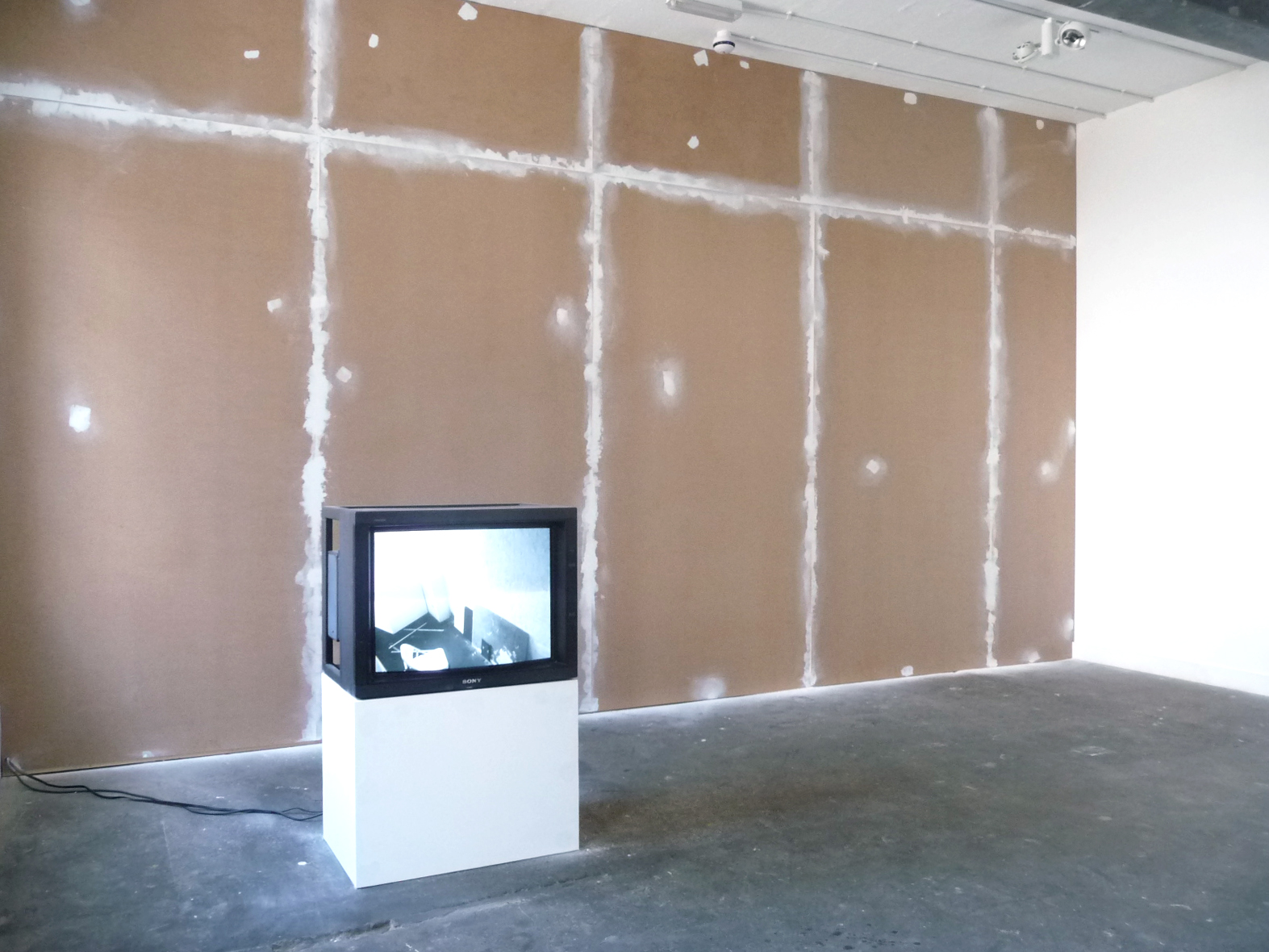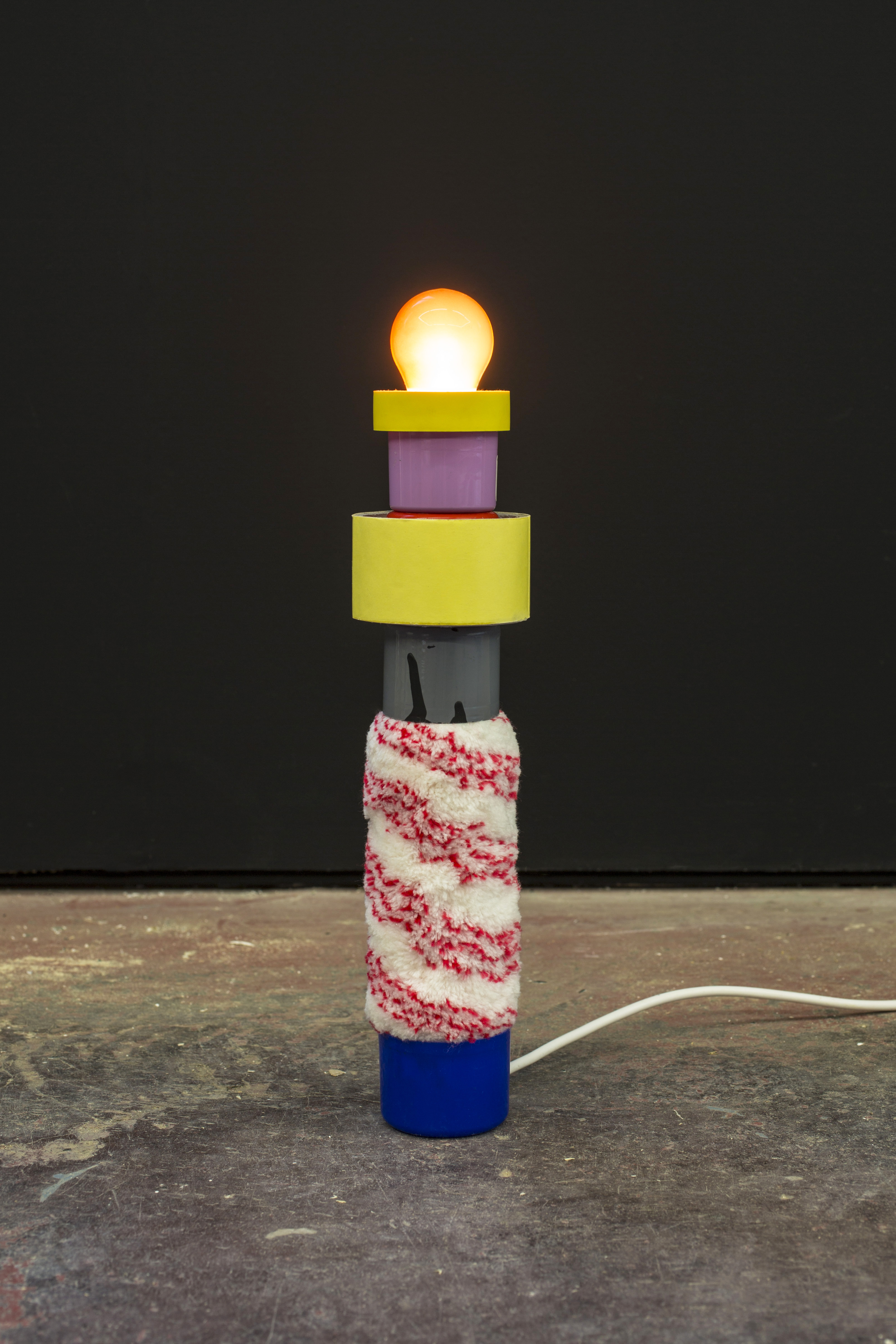Noel Clueit
Interview by Sean Ketteringham
Published September 2015
-
Noel Clueit's work looks at the relationships between objects and language. Clueit often re uses objects from the studio and re-purposes them in order to establish a connect between the designed object and the art object.
-
To get started I'd like to talk a little bit about what inspires your work. Your recent exhibition at Bureau in Manchester featured reproduced images of Henry Moore’s work and some comparisons can be found between your Rehearsals For Semiotic Movements (Mavericks Version) and Yvonne Rainer’s Hand Movie. What role does influence play in your creative practice? And who specifically have you been influenced by as you have matured as an artist?
Yes, it’s these comparisons, or coincidences I find useful; how Rainer’s Hand Movie, made in the mid sixties, is replicated by Apple 50 years later, similar in form but the comparison to that work is boiled down to this completely banal instructional video. There’s something in that repetition, how that closeness, between art and commerce, between modern and the contemporary, can at the same time create a distance that allows for the banal to become almost enigmatic. So it’s more that this idea of a secondary influence, of repetition, becomes the influence in the work.
It’s difficult to be so specific as to who I find influential, there isn’t really a particular artist, they slip in and out of that frame. But of course, there are many individual works, designs, buildings, songs, writings etc. that steer thought.
Having said that I do find that movements have an influence on how I navigate ideas, international style, minimalism, punk, the cultural impact of such movements, and how the ideology of such are increasingly diluted, mutated, used and reused, where does that leave us in relationship to these histories, what’s spat out after all this? They’re the bits to pick at.
I’m being quite nonspecific, but for me this is symptomatic of how the very notion of influence has altered in the past decade or so. My own relationship to influence is very specific to the way in which I research.

Rehearsals for Semiotic Movements (Mavericks Version), video, 2014
Its an interesting distinction to make between the individual's and the collective's (or the movement's) influence on you. And I'd also like to pick up on how you believe that influence has changed in recent history. Many people would claim that the nature of art has changed fundamentally in the past thirty or so years, our relationship to the past and what is, as you say, 'spat out' has also shifted dramatically. I feel you do respond to this in your work but I wonder how you think influence and creative expression has changed recently, how you have responded to such a change, and whether that has been a conscious feature of your work...
It definitely is a feature, and that change in art goes hand in hand with changes in technology. My relationship to that change stems from the pace of technology whilst at art school, probably even more so before then, thirty years. I didn’t really keep up with those shifts in technology, I remember at college, the better college down the road had mac suites and we were still doing everything by hand. So I’ve always had this fondness for traditional process, and I’m interested in where technology attempts to replicate tradition.
In terms of creative expression, again there is definitely a response to those changes but I always keep things quite hidden. Going back to tradition, this notion of drafting has always been a feature in the work and although this is not always something visible, the approach is really important. This probably makes more sense to think of drafting in terms of use in the design industry, which again this process of drawing is replicated by technology. Drafts, models, armatures, they offer a potential to be read in different ways and are more open to interpretation. These modes of pre-production offer a way of breaking down ideas into constituent parts and also to show your workings - the mechanics of the idea can be laid out, it allows for everything to become a bit ambiguous and this in return leads to mis-readings. This way of working acts as a method to understand my own understanding of things.

Exhibition view, Towards Monumental Sculpture, Bureau, Manchester, 2014
I love that idea of 'showing your workings'. Its something that is powerfully presented in your sculpture at Bureau, with its frame and facade, as part of your Towards Monumental Sculpture show. You also mention the design industry which reminds me of your reworking of the Martine Bedin Super Lamp. Can you tell me a little bit about these two very different works and how they reflect your intentions and creative practice as a maker of objects rather than of sculpture per se?
Yeah I always struggle with being referred to as a maker of objects, or having an object-based practice, it always sounds a bit ‘producty’. But the work definitely comes from an interest in objects, and that distinction between object and sculpture. It’s something that comes from this muddy tautology between design objects and art objects, and in what goes astray in the compression of those two languages.
The Bedin Super Lamp was used for its this representative product that is emblematic to the style of that design movement, it’s one of those objects I kept seeing images of in books, the remade version is a home spun homage towards that experience, it’s an attempt to lift that form from the page as a way to reanimate it, and to own it. I saw one in Brussels a few months back and realised I got it really wrong - the scale is way off. At the time I had always been attempting to make quite slick work but that always felt really empty, it becomes too much like designing art. So I’m quite happy with things being home-spun, it helps to get beyond the surface of things, there’s a dumb honesty about it.
Although, in saying that, the work at Bureau was totally about this notion of designing rather than making, the whole process was like meeting some sort of brief. The work in that show was very much a draft for a potential sculpture, and those ideas of potential or process were further emphasised in Rehearsals For Semiotic Movements (Mavericks Version).
And to go back to this thing of making objects rather than sculpture, I’m conscious of my own desire to make sculpture, but practically I don’t have that kind of practice. I’m always aware of these things I don’t do, and in not doing them, in not practicing them, this allows this freedom to use those mediums. If that makes sense?
So both these works are related in the fact that each uses Modernist iconography as material to then interrogate it. In both works the approach is kind of opposite, and that’s ok, that back and forth is important. There’s also a seven-year gap between these works, which makes it quite difficult to summarise ideas of intention and creative practice, or maybe it’s easy, I don’t know, have I answered your question?
Yeah, I think you have. I definitely agree with you about the tricky game of categorisation that pits art against design. It does muddy the water but when it comes to interpretation its that ambiguity that allows you to consider work from a double perspective. When you toy with that boundary - like in your Bureau show - it can be potent.
I thought it would be interesting to see how you now view an earlier work alongside something more recent and I'm sure that cycle of self-criticism plays a role in your work. You've recently started a residency at Wysing Arts Centre. Do you find an opportunity like this makes you look more critically at your own work and, more generally, how do you feel the residency at Wysing benefits you? What sort of work can we expect to emerge out the other side?
Yes definitely, and it helps me be more critical about the work I have made in the past few years, it’s a great opportunity to present ideas to what is essentially a group of strangers, of course that isn’t the case as we get to know each others work, but I’m careful about what works I chose to discuss in their relevance to what I have been doing more recently.
Every six weeks or so we spend time at another institution, each having a different programme of talks, seminars and presentations, so the discourse constantly changes direction. And in that respect I’ve no idea what work will emerge, I’m only about six weeks in. Like any residency, it’s a testing ground, it allows for surprise. So I guess I am avoiding being too prescribed about what will develop.

document/monitor, MDF, polyfiller, plinth, monitor, various artworks, 3 channel camera system, 2011
I'm particularly interested in your participation in the 2010 solo show/group show at Crate in Margate. In your work for the exhibition you establish a physical and conceptual barrier between the audience and the work of the other artists in the show. Could you explain how you achieved this, along with the brief you were given, how you designed your work, as well as what you aimed to explore in the piece?
This is a show I was invited to participate in by Toby Hudlestone, the idea behind it was that there would be four or five solo shows that would accumulate into a group show as the project came to an end. I was the third artist to make work in the space in direct response to the shows that had come before.
It was a really tight timescale; I think I had about three days to make the show without any solid idea of what I was going to do. The only knowledge of the space I had was from a few emailed photographs, one of which I had used to produce a print that had a large cross through it obscuring the image of the space, so it wasn’t surprising that my ’solo show’ sat around this idea of negation, seeing as I hadn’t made any work.
The response I had to the other work in the show was to remove it all and arrange it at the back of the space, everything was arranged from the memory I had of the work - each project had been documented on a blog so we could all keep track. Even though I had this visual, I couldn’t actually make out most of the content, scale or position within the gallery. It was this distance that I wanted to play with, to provide the audience with that same experience I had of these works.
Once the works were arranged I remade another work in the show, repurposing it as a wall cutting off the works from view. All the videos were left running and the store area was documented by three cameras which cycled through the works. On entering the space the only work in the gallery was a CRT monitor on a plinth. Although the gallery was empty it included everything: it was the complete accumulation of the two previous shows. I was aware of Toby’s intentions to the curatorial idea behind this process, and I was aware my contribution threw a spanner into the works, but it’s good to knock things off track.
A preoccupation with the curatorial process frequently surfaces in your work. Do you find such self-awareness a blessing or a burden, and what do you feel this concern for the drama of the exhibited space offers your work?
Well, exhibitions are theatrical, a staged process, if that’s also what you mean? A space provides the structure for understanding, and as such acts as a stage. I’m particularly interested in how this can be used to open up potential readings of the work, where this structure is even partially exposed.
It’s both a blessing and a burden at different times. Most of the work I make is realised through an invitation to show, and in this scenario the work usually develops through the nature of the space. It is a burden in the sense that I’m waiting for an invitation, and as such the work usually ends up being very different from what is happening at the same moment in the studio. But over all it’s a positive thing, self-awareness allows a freedom for play, and what happens in the studio comes back round eventually anyway.
It sounds like you use your studio work exclusively as a testing ground for your exhibition work, like you hold exhibited work in one box and private, studio work in the other. Is that a reductive way of putting it or do you find the boundary blurring? How do you manage the relationship between studio work and exhibition work? I'm thinking especially of your work/lamp series which confronts this directly...
The lamps have been an ongoing work for a while now; I started making lamps out of scrap bits about eight years ago, when I moved into a new studio they started to resurface. I’m a hoarder in the sense that I keep hold of pretty useless things, the lamps become a way for this stuff to find it’s way out.
They look simple but are actually quite time consuming to get everything to fit together in a certain way, It’s more like a design process. I guess it’s this similar gesture to remaking a Memphis lamp, they share that same aesthetic. I’ll get over it when I can afford a load of Memphis furniture.
Having a studio made me realise that I don’t really have a studio based practice, I think art school tricked me into thinking that this was the way to work but I don’t buy into this idea that as an artist you should be in there all the time. If I have something specific to work through then the studio gets used, otherwise I’m mainly working from home, it’s just as valid to be working through ideas on a laptop.
Exhibition work and studio work are separate, although they do intertwine. I might find a drawing I made a couple of years ago that triggers work for a show, it basically involves going through the plan chest every few months and seeing what’s interesting. In the same respect I also have the same process with whatever I save on my hard drive, it all comes down to finding the right point where these things begin to link up.

Part of the work/lamp series, used tape rolls, paint roller, electrical tape, light bulb, 2015
Finally, what's next for you? And what are the key hopes, ambitions, and ideals that drive your practice forward?
I’m focusing on a few different things at the moment. The residency with Wysing continues until June next year, so this is forming a framework for now. I’m not sure what will come of that, but right now it gives the opportunity to work with other artists, and to meet people in other cities, and this is really important to me.
I’m also part of a couple of group projects here in Manchester. One that I’m focusing on is a collaborative project with Maeve Rendle called titledateduration.com. Briefly, this is a gallery programme that only presents solo shows, usually singular works from an invited artist. We only publish the title of the show. It’s interesting to see the effect this has on the relationship between an audience and the work. We wanted to set up this complete focus on the work rather than the event. The decision on what is shown involves a lot of discussion, not just why we are showing this work but also if the timing feels right. We usually end up with a show that crosses some of our individual interests, and as a result this process has an influence on how I think about my own work.
In terms of ambition, that’s a bit of a tough call to answer. Work develops organically, so I feel like ambition is very much in the moment of the show, or else its just plans on paper. There is a definite need to stop waiting for invites, so I’ve started working on a proposal for a series of solo/group projects. The process in itself is starting to shape new works and has already changed my approach. These proposals might never get beyond a draft but I’m not too concerned about this, as long as there is something happening. That seems to happen a lot, it’s a continual editing process. I guess this is how I work out what the ideal is!
-
Noel Clueit lives and works in Manchester. Recent exhibitions include Towards Monumental Sculpture, Bureau, Manchester, Shit Show, Malgras | Naudet, Manchester, Seeing In The Dark, CIRCA, Newcastle Upon Tyne and Double Double, Workplace Gallery, Gateshead.
-
If you like this why not read our interview with Katy Cole
-
© 2013 - 2018 YAC | Young Artists in Conversation ALL RIGHTS RESERVED
